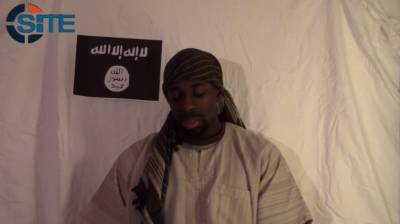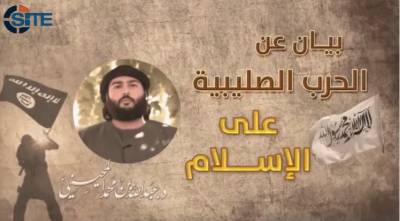Al-Qaeda Strikes Back: Part Two

The question of who was behind the Charlie Hebdo attack appears to have been settled with an explicit claim of responsibility by Nasr bin Ali al-Ansi, a key leader in al-Qaeda in the Arabian Peninsula (AQAP). There is a good deal of evidence that supports al-Ansi’s claim.
Both terrorists had direct ties to the group and Cherif Kouachi asserted before their deaths that the brothers were carrying out the attack on behalf of AQAP. A leader of AQAP had already claimed the attack for the group in a series of tweets and the AP received a direct claim of responsibility from AQAP as well. Although American officials have been slow to credit AQAP or al-Qaeda (AQ) for the assault, it seems clear that this was indeed the first effective attack by AQ on a Western homeland target since the 7/7 terror attacks in London.
 Just as stunning is the news that the Charlie Hebdo attack was apparently carried out in coordination with another series of outrages, committed by a man pledged to the Islamic State (IS). In a video claiming responsibility for the murder of a policewoman, the destruction of a car, and an attack on a kosher market that killed five, Amedy Coulibaly said that he had sworn fealty to IS leader Abu Bakr al-Baghdadi and asserted that he and the Kouachi brothers were part of the same team, divided into two parts to carry out attacks on separate targets. A statement from al-Qaeda in the Islamic Maghreb (AQIM) appeared to give backing to this claim. Issued in support of both attacks, the statement made no distinction between the terrorists, blessing and endorsing them as a unit, “the knights of the invasion of Paris (the three).” The later claim of responsibility from AQAP is more ambiguous on this point, with al-Ansi stating that the two attacks “occurred at the same time” (tazamun) and were a “success” (tawfiq) from God. Al-Ansi did, however, call Coulibaly a mujahid and brother and endorsed his actions unconditionally.
Just as stunning is the news that the Charlie Hebdo attack was apparently carried out in coordination with another series of outrages, committed by a man pledged to the Islamic State (IS). In a video claiming responsibility for the murder of a policewoman, the destruction of a car, and an attack on a kosher market that killed five, Amedy Coulibaly said that he had sworn fealty to IS leader Abu Bakr al-Baghdadi and asserted that he and the Kouachi brothers were part of the same team, divided into two parts to carry out attacks on separate targets. A statement from al-Qaeda in the Islamic Maghreb (AQIM) appeared to give backing to this claim. Issued in support of both attacks, the statement made no distinction between the terrorists, blessing and endorsing them as a unit, “the knights of the invasion of Paris (the three).” The later claim of responsibility from AQAP is more ambiguous on this point, with al-Ansi stating that the two attacks “occurred at the same time” (tazamun) and were a “success” (tawfiq) from God. Al-Ansi did, however, call Coulibaly a mujahid and brother and endorsed his actions unconditionally.
 These two developments have important implications. First, Said (and possibly Cherif) was in Yemen more than three years ago, yet did not carry out attacks immediately upon returning to France. The new AQAP statement confirms the delay between training and implementation, stressing that the attacks had been “long planned” and involved the now-deceased Anwar al-Awlaqi, just as Cherif Kouachi stated. Relatives of the brothers maintained that they showed no signs of radicalization when they returned from Yemen, and they were not picked up by the French. It is also interesting that the AQAP source that passed on the earlier claim of responsibility told reporters that the attack was “foreshadowed” in the latest Inspire magazine (published by AQAP in December), which showed a praying figure with the sort of bomb used by the Tsarnaev brothers juxtaposed with an image of a French passport. It seems reasonable to conclude that by “foreshadowed,” the source might have meant “activated.” In sum, the patience and sophistication of AQ’s preparation for this attack is impressive and shows that the group has learned a great deal about how to evade detection by Western counter-terrorism efforts.
These two developments have important implications. First, Said (and possibly Cherif) was in Yemen more than three years ago, yet did not carry out attacks immediately upon returning to France. The new AQAP statement confirms the delay between training and implementation, stressing that the attacks had been “long planned” and involved the now-deceased Anwar al-Awlaqi, just as Cherif Kouachi stated. Relatives of the brothers maintained that they showed no signs of radicalization when they returned from Yemen, and they were not picked up by the French. It is also interesting that the AQAP source that passed on the earlier claim of responsibility told reporters that the attack was “foreshadowed” in the latest Inspire magazine (published by AQAP in December), which showed a praying figure with the sort of bomb used by the Tsarnaev brothers juxtaposed with an image of a French passport. It seems reasonable to conclude that by “foreshadowed,” the source might have meant “activated.” In sum, the patience and sophistication of AQ’s preparation for this attack is impressive and shows that the group has learned a great deal about how to evade detection by Western counter-terrorism efforts.
 Second, if there was indeed cooperation between an AQ cell and an IS member, it might be that AQ’s outreach to IS in September has had some success. Immediately after the U.S. began bombing IS positions that month, AQ-linked clergy and branches declared that they stood in solidarity with all mujahideen and suggested that it would be good to end the infighting and unite around “warding off” the common enemy: the U.S. and the West. In October and November, there were repeated reports of local cooperation between IS and AQ forces in Syria, even while tensions between leaders of the two organizations remained high. The apparent coordination of the Kouachi brothers with Coulibaly might parallel the similar local collaboration in places like Syria: cooperation, but only while taking on a common enemy. If AQ and IS are cooperating, the two can create a very dangerous synergy by taking advantage of each organization’s strong points: IS’s large number of foreign fighters and inspired extremists, and AQ’s operational sophistication.
Second, if there was indeed cooperation between an AQ cell and an IS member, it might be that AQ’s outreach to IS in September has had some success. Immediately after the U.S. began bombing IS positions that month, AQ-linked clergy and branches declared that they stood in solidarity with all mujahideen and suggested that it would be good to end the infighting and unite around “warding off” the common enemy: the U.S. and the West. In October and November, there were repeated reports of local cooperation between IS and AQ forces in Syria, even while tensions between leaders of the two organizations remained high. The apparent coordination of the Kouachi brothers with Coulibaly might parallel the similar local collaboration in places like Syria: cooperation, but only while taking on a common enemy. If AQ and IS are cooperating, the two can create a very dangerous synergy by taking advantage of each organization’s strong points: IS’s large number of foreign fighters and inspired extremists, and AQ’s operational sophistication.
Finally, there was the series of assertions in the AQAP claim of responsibility that might reinvigorate an ongoing debate over the relationship between AQ’s central leadership and the organization’s branches. First, the current state of the debate. In a televised appearance on January 11, U.S. Attorney General Eric Holder said:
I think the decimation of core al-Qaeda has probably reduced, if not eliminated, the ability of al-Qaeda to do the kind of thing that they did on September the 11th. On the other hand, al Qaeda affiliates like al Qaeda in the Arabian Peninsula has moved what they do to smaller kinds of attacks.
The intellectual framework behind this assertion is that there is a wide gulf between the leadership of AQ (the “core”) and its branches like AQAP, and that “affiliates” carry out smaller attacks without engagement by a decimated leadership in distant South Asia. A majority of American AQ experts agree with this view of AQ, and have, over the past two years, described the group as “a loose coalition of separate terrorist groups with their own individual causes” and “really not one al-Qa’ida anymore,” and that therefore the affiliates have become “more operationally autonomous from core AQ and increasingly focused on local and regional objectives.” A minority of experts (including me) disagree profoundly with this view, and believe that there is more command and control between the leadership and the branches, and that all the branches are equally focused on attacking America and the West as they are taking over their local regions.
The questions we now have to ask ourselves are these: Does AQ (and its branches) understand itself? Or are American experts and this administration better informed than AQ itself about what the group is?
Al-Ansi directly engages these interpretations of AQ in his statement. First, he says that AQAP “chose the target, laid the plan, and financed the operation,” clearly giving the AQ branch the operational lead in carrying out the attack. Second, he just as clearly says that this was done in compliance with “the order of our general amir, the generous Shaykh Ayman bin Muhammad al-Zawahiri.” According to one of AQAP’s leaders, in other words, while the branches have the freedom of maneuver to plan and carry out operations, they do so on orders directly from the leadership of AQ’s “core.” The questions we now have to ask ourselves are these: Does AQ (and its branches) understand itself? Or are American experts and this administration better informed than AQ itself about what the group is?
